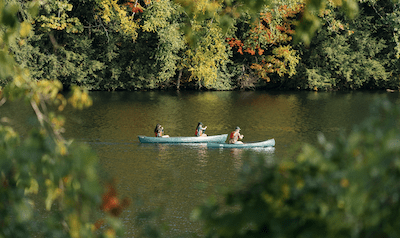
Mindfulness and Meditation
What is Mindfulness?
Most simply, mindfulness is curiously noticing what is happening right now, through a nonjudgmental lens. It is taking notice of the sounds you hear, the sights you see, the sensations your body feels, the scents and flavors you experience, and the various emotions you feel in any given moment. Mindfulness is noting when you are lost in thoughts – such as worrying about past events or anxiously planning the next day – and kindly returning to the present moment. The practice of meditation is one way used to build the capacity for mindfulness.
Although widely recognized as a stress management tool in the western culture, mindfulness-based practices are historically rooted in spiritual traditions around the world. They are thought to have originated from eastern Asian and Buddhist philosophies most directly.
Why Practice?
“With mindfulness, we train ourselves to pay close attention to what is going on in the present moment; just as it is. Much of our suffering is a result of regrets about the past, worries about the future or judgments about the present. When we are mindful we become aware of and explore these habitual thought patterns and ways of reacting. This attitude of curiosity allows us to create new and healthier ways of responding to life’s challenges.”
The Centre for Mindfulness Studies
With regular practice, you increase your capacity to be more present, intentional, and self-aware. Research has also shown that mindfulness meditation can lead to many benefits that support our holistic wellbeing including:
- Reduced stress and anxiety
- Increased focus, attention, and memory recall
- Greater self-compassion
- Enhanced communication and interpersonal relationships skills
- Strengthened immune system
Cultivating Mindfulness
Along with meditation, there are many ways to strengthen your mindfulness muscle:
Meditation
Meditation is a formal practice that strengthens our capacity for mindfulness. During mindfulness meditation, we place our attention on an object of focus or “anchor”, such as our breath. When our mind begins to wander (as it often will), we kindly notice it and then bring our attention back to our breath. It’s during this process of focus – wandering – noticing – refocus that you are building your mindfulness “muscle.”
Mindful Movement
Mindfulness isn’t just about sitting still and noticing your breath. You can cultivate a deep sense of mindfulness through any physical activity; be it walking, yoga, running, or any other movement-based activity.
“The principles of mindful movement are the same as any other mindfulness practice. We aim to bring our full attention to the present moment to experience the here and now. We bring our awareness to our movement and focus on our breath or the way our body feels as it moves.” www.mindful.or
Nature
Being in the natural world has a way of helping us connect to our innate ability to be mindful. Nature is ever changing, expansive, vast, living, dying – it shows us the natural cycles of life in an awe-inspiring way. This gives us the opportunity to be more present and aware of what is around us, and what is within.
We begin to feel more fully alive, our levels of stress hormones lower, and our brains begin to orient to calm and natural alertness, all of which are conducive to the practice of mindfulness.
Look for nature-based resources through:
Creativity and Art
Creativity and the arts can be a powerful conduit to wellbeing. Whether we are engaging with the arts through viewing performances, taking in others' work, or getting our own creative juices flowing, there are many ways that creativity can enhance our wellbeing.
Everyday Life
Brushing our teeth, showering, walking from one side of campus to another, eating – each can be a mindfulness practice. When we intentionally bring our awareness to activities in our everyday lives, we can cultivate deeper connection, presence, and appreciation for the “little things”.
You must be logged in to post a comment.